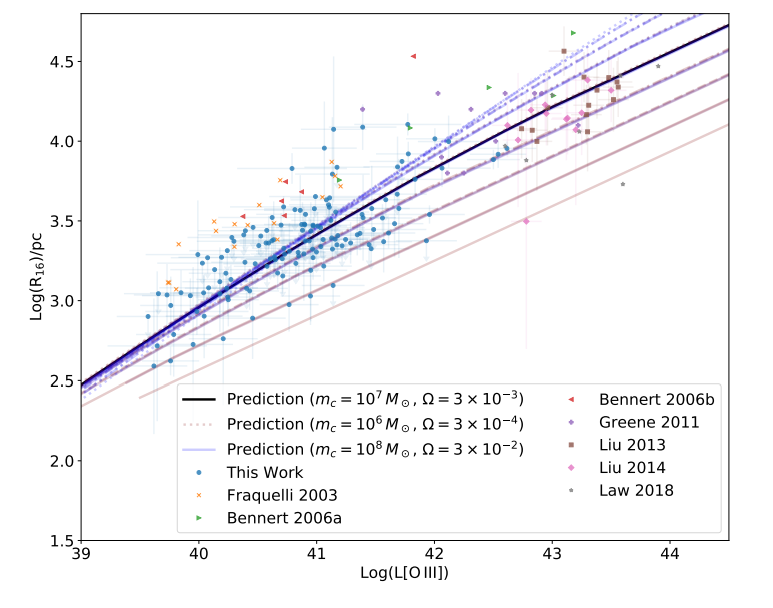The spatial extension of extended narrow line regions in MaNGA AGN
As part of the Sloan Digital Sky Survey, the MaNGA (Mapping Nearby Galaxies at APO) project is producing a catalog of integral field unit (IFU) spectra of nearby galaxies. IFU spectra provide detailed information about the light coming from different points in a galaxy. This is an invaluable tool for astronomy, and in particular, when these galaxies are hosts of Type II quasars, the IFU spectra can be used to calculate the [O III] size and luminosity, the quantities we modeled here. This paper uses MaNGA data to add many more points to the observed size/luminosity relationship, and among many other things, addresses whether that model holds water.
The short answer (which is all I’ll provide here) is yes. The following plot shows our model (adjusted for a slightly different definition of [O III] size) superimposed on the MaNGA data. We find quite a good fit over about four decades in [O III] luminosity. The model fits best when we use slightly higher cloud masses than the ones from our theory paper (\(m_c \sim 10^7\,M_\odot\) here, compared to \(m_c \sim 10^6\,M_\odot\) there). But in any case, the new data is certainly consistent with our model being an adequate description of the relevant physics.

Many thanks to Jianhang Chen and other collaborators for including me in this work. It’s always very satisfying to see theory match with data!
Enjoy Reading This Article?
Here are some more articles you might like to read next: